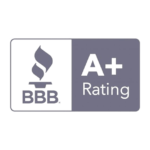Did you know that 90% of marketers consider visual content to be important for the success of their strategy? Also, when people see a relevant image along with a piece of information they are hearing, they tend to remember 65% of it even after 3 days! So, assuming you have a new-age business that already has a digital presence and you know the importance of great content, we believe that a smart visual content marketing strategy is something you cannot ignore. Visual content of different kinds can not only boost your brand’s awareness and website traffic, but also earn more customer trust, help you forge a relationship with them, and seal more deals. Moreover, visual content can be easily used across blog posts, emails, newsletters and social media posts. Read on to know all about it.
Visual content – what does it mean?
So, what is visual content? it essentially refers to any content piece that includes images, charts, diagrams, screenshots, videos, infographics and even slide decks. Memes and GIFs are also considered as visual content, and in fact, they are gaining rapid popularity when a brand wants to infuse a bit of humor in its marketing style. Virtual tours are another type of visual content stealing the show because of their realistic, immersive, interactive and engaging nature.
Hence, while devising a visual content strategy for your brand, you need to understand which type or format of content will work for you. While any kind of visual content is more exciting and interesting than plain old text, you must figure out which visual type will assist each stage of your buyer’s journey, from awareness to consideration to purchase.
Different visual content types your business can use
Usually, the kind of visual content you choose depends on what you sell, your target audience, your business size and budget. Knowing about the following content types can get you started:
Pictures and diagrams – Well-shot, bright and high-resolution images are essential for any website as they hook visitors instantly. However, they should be relevant and address the needs of your potential customers. Diagrams are usually more detailed and often labelled and can come in handy when you want to explain something a little conceptual to your reader, especially before they take a decision. Tech companies or those selling hardware will find them useful.
Charts and infographics – Visual content strategy for businesses that deal with a lot of data or numbers should include charts and infographics to convey complex information in a simple way. Make sure that the outcome is neat, colorful and easy to process in a short time. For infographics, keep the text crisp and minimal. These visual content types can win your customers’ trust and encourage them to consider your products.
Videos and virtual tours – These are more powerful than still images, whether you want to increase awareness, generate more leads or get more conversions. They usually convey your message in an interesting way, without banking on a lot of text. Plus, by using the storytelling element, you can make videos or virtual tours more recall worthy. Virtual tours are especially a great idea for any business with a physical presence, like restaurant, hotel, college, school, golf course, or showroom. This way, prospective customers can find out all about you and make an informed choice. Videos and virtual tours are effective visual content for social media platforms too, as they engage viewers quickly and hold their attention. You can make them fun or emotional to get more likes and following too.
Screenshots – Screenshots are great for building brand credibility and customer loyalty. Why? You can share screenshots of all those glowing reviews that past customers have left you on Google or other discussion forums, so that others can see the proof and flock to you as well. Screenshots are also helpful when you want to explain how a software or product works, especially as a step by step guide.
Memes and GIFs – Humor is often the best way to break the ice with your target audience. However, you need to keep the nature of your business in mind. For instance, if you sell fashion accessories, baby products, snacks or video games, creating a short but funny GIF or meme can hook your potential customers immediately. It can also make your brand or product memorable.
So, does visual content strategy help your business for real?
The answer is a resounding yes! When optimized for search engines, visual content helps your website to rank high on the search results page. Which means, you get more visibility and more people become aware of your brand. Visual content is also great for explaining why and how your products are useful, which aids potential customers to compare you with other brands and decide smartly. Pictures, videos, virtual tours, charts and infographics clear doubts and ensure transparency, which goes a long way in building your brand image.
Ready to craft your visual content marketing strategy from scratch or take it to a whole new level? Just shoot us an email at info@massinteract.com and we will get back to you soon.






















